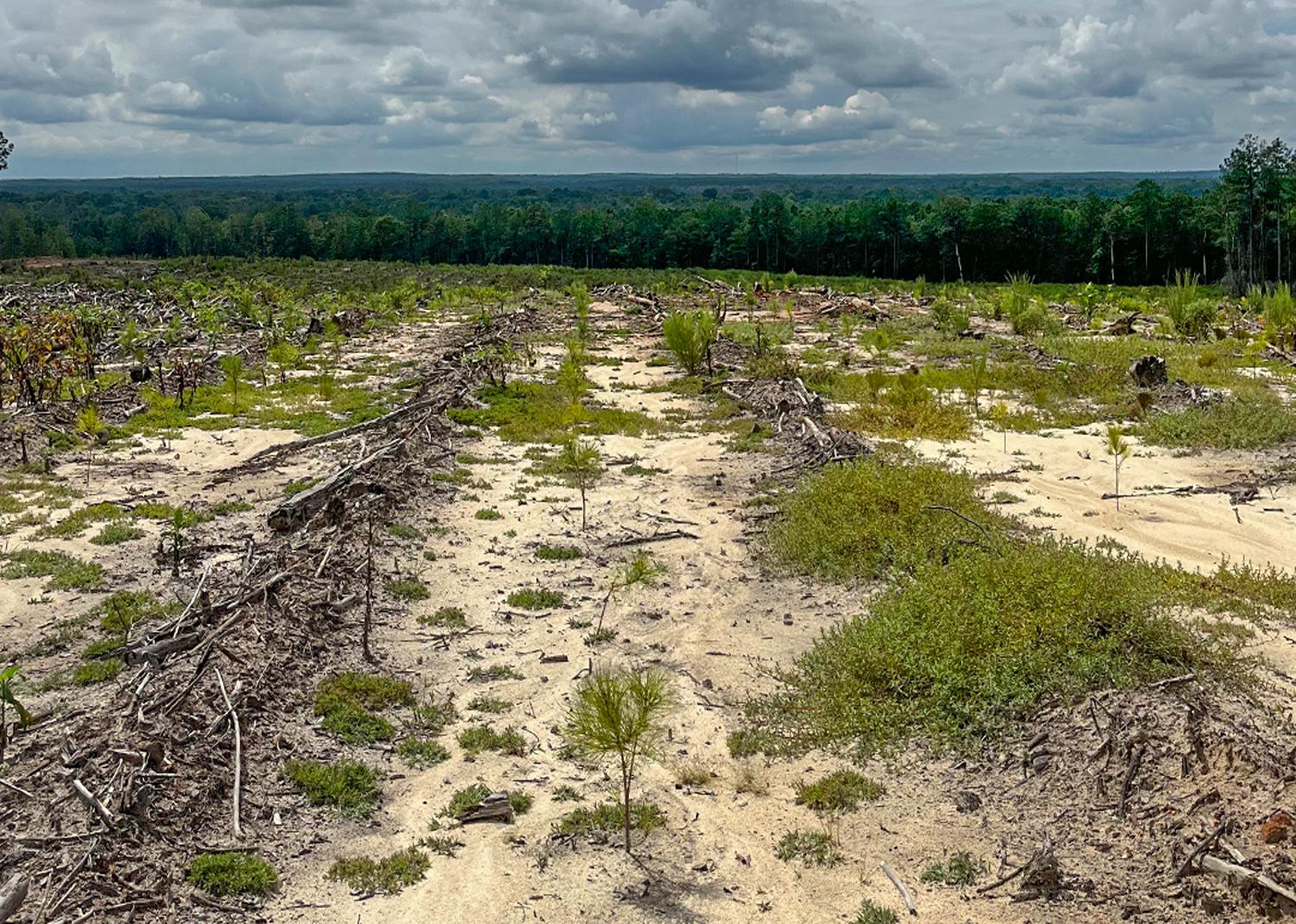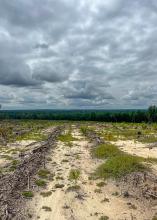Information Possibly Outdated
The information presented on this page was originally released on March 6, 2023. It may not be outdated, but please search our site for more current information. If you plan to quote or reference this information in a publication, please check with the Extension specialist or author before proceeding.
Consider temps, soil makeup when planting loblolly pines
STARKVILLE, Miss. -- When planting loblolly pine trees on well-drained soils, landowners should heed two basic rules: Don’t do it during a freeze, and make sure to plant roots and seedlings deep.
To increase the chance of survival on well-drained soils, some Southern regeneration foresters suggest planting loblolly pine in a deep hole with the root collar several inches below the soil surface.
At some sites, survival has been increased by 10% or more, said Curtis VanderSchaaf, forestry specialist with the Mississippi State University Extension Service. He also mentioned that this practice is commonly used to reduce the negative impacts of droughts on seedlings.
VanderSchaaf said that whenever landowners are planting loblolly, slash and shortleaf pine in this region on well-drained soils, they should also consider the potential for freezes in December, January and February.
One example of a bad time to plant was the third week of December and through Christmas, when much of Mississippi and surrounding states experienced a protracted freeze. Temperatures in several areas of the state fell to single digits.
“In more northerly climates, planting deep is often used as a means to reduce frost heaving, and this will likely reduce freeze injury to roots,” VanderSchaaf said. “Soil temperatures 6 inches below the surface rarely reach 32 degrees in Mississippi. Planting loblolly pine, slash pine and shortleaf pine seedlings deeper than typical on well-drained sites should not only continue to be considered to reduce transplant shock and mortality caused by future droughts, but it likely will also reduce root injury or frost heaving resulting from future freeze events.”
Typically, height growth is also increased so that tree height after two years is the same as or greater than seedlings planted with the root collar at groundline, he said.
“Planting roots deeper and closer to moist soil helps to reduce moisture stress and transplant shock,” VanderSchaaf said. “This can provide a buffer against unforeseen, and often unpredictable, droughts right after planting and later in the growing season. But, beyond droughts, it likely will also reduce root injury or frost heaving resulting from freezes such as that which occurred this past December.”
Ernie Spiller, a genetic investment advisor with IFCO Seedlings, said another long-term issue shallow planting presents is J-rooting. This term describes defective roots that form the shape of a letter “J” due to a lack of depth and room.
“Shallow planting is a problem because the top portion of the ground will dry out quicker and you can lose a lot of moisture in that layer,” Spiller said. “Deeper down, the roots are cooler and more damp.
“By planting roots a few inches deeper than normal, the negative effects of limited soil moisture in the upper soil profile can be reduced,” he added. “Deeper planting is one reason why survival of loblolly pine is often greater with machine planting.”
Not all pine species should be planted deep into the ground. Longleaf pine, for example, is to be planted shallow, ensuring the bud is slightly above the soil.
MSU Extension Publication 2470, “Managing the Family Forest in Mississippi,” is available for more information at https://tinyurl.com/5n82vkne.






